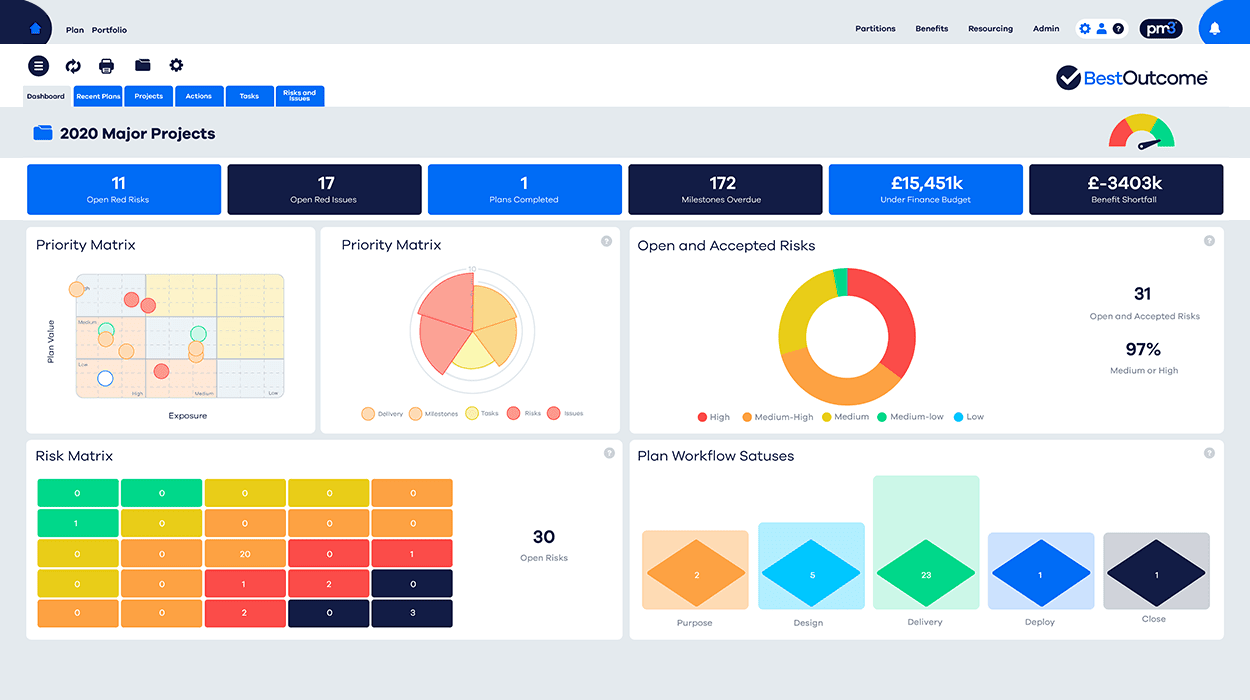In the ever-evolving landscape of business, the art of strategic planning has never been more crucial.
A well-crafted business portfolio is the blueprint for success, guiding organisations through the complexities of the market and ensuring a competitive edge.
In this comprehensive guide, we will demystify the process of designing a business portfolio in seven strategic steps.
Let’s get started!

Think of a business portfolio as a company’s comprehensive story, just like a detailed report card that goes beyond merely listing products. It’s a narrative that encapsulates a company’s identity, values and strategic direction.
Rather than just showcasing individual products, a business portfolio provides a holistic view of a company’s activities. This includes a company’s products and services, as well as strategic business units (SBUs) that contribute uniquely to the company’s overall identity.
Analogous to a professional résumé, a business portfolio tells a story of the company’s journey, highlighting milestones, lessons learned and future aspirations.
It serves as a strategic guide, steering the company toward its long-term goals while adapting to the ever-evolving business landscape.
In essence, a business portfolio is more than a static snapshot – it’s a dynamic narrative that brings together different facets of a company. It serves as a roadmap, ensuring everyone understands what the company stands for and where it’s headed.
Creating an effective company portfolio is an art that requires a deep understanding of the company’s essence and a strategic alignment of its diverse elements.
It’s crucial to distinguish between a business portfolio and a product portfolio.
While a product portfolio centres on individual offerings and their life cycles, a business portfolio spans the entire scope of a company profile.
It includes various products, services and strategic business units, creating a holistic view that aligns with the company’s overarching strategy.
Understanding this difference is fundamental to effective business portfolio management.
A product portfolio is a bit like a snapshot, focusing mainly on individual products and their life cycles. It’s the list that tells you what’s on the shelves and how well each item is doing in the market.
Think of it as a specific chapter in our business story.
On the flip side, the business portfolio zooms out to cover the entire novel. It’s not just about products; it’s about everything the company does.
This includes all the products and services, along with those special projects and strategic business units that make the company unique. It’s the big picture, capturing the essence of the entire story.
In simpler terms, while the product portfolio dives into the nitty-gritty of what’s for sale, the business portfolio provides a broader view. It’s like comparing a detailed chapter about a specific product to the entire novel that tells you the company’s complete tale.
 Success Stories
Success StoriesTo see how institutions across the UK are using PM3 to improve project delivery, explore our Success Stories featuring real-world examples and outcomes.
Creating a business portfolio is like crafting the master blueprint to guide your company toward success. This is why having a business portfolio is a strategic imperative for any organisation.
Alignment with strategy
The primary reason to invest time and effort into a business portfolio is to align it with your company’s mission and overarching business strategy.
It’s the compass that ensures every product, service and strategic business unit (SBU) is moving in the right direction, contributing to the realisation of your long-term goals.
Enhanced competitiveness
Think of a business portfolio as the secret weapon that gives your company an edge in the market.
By carefully curating your offerings and SBUs, you not only stay competitive but also gain a strategic advantage.
This is where the magic of the Boston Consulting Group (BCG) matrix comes into play, helping you identify stars, cash cows and those areas needing a bit more attention.
Adaptability to market changes
The business world is like a rollercoaster, with market dynamics constantly shifting.
A well-designed portfolio is your company’s flexible armour, allowing you to adapt to changes in market growth and maintain a strong competitive position.
It’s the playbook that ensures you’re always ready for whatever the business landscape throws your way.
Identification of cash cows and new business opportunities
Your business portfolio isn’t just a snapshot of the present; it’s a forward-looking telescope. It helps identify your cash cows – those reliable money makers that keep the lights on – and points out new business opportunities.
It’s your guide to strategically investing in what works and exploring exciting avenues for growth.
Cohesive response to market dynamics
When the market does its unpredictable dance, your business portfolio is your steady partner.
It ensures a cohesive and dynamic response to changes in the business environment, helping you navigate through challenges while staying true to your company’s strategic goals.

Designing a compelling business portfolio is similar to creating a roadmap for your company’s success – it requires careful planning, strategic thinking and a
touch of creativity.
Here’s a step-by-step guide to help you craft a business portfolio that aligns seamlessly with your mission and sets you on the path to sustained competitiveness.
1. Define your business strategy
The first step in designing your business portfolio is to articulate your overarching business strategy. What are your company’s mission and values?
Identify your long-term goals, whether they revolve around innovation, cost leadership, or differentiation. This foundational step sets the tone for the entire portfolio, ensuring every element aligns with your strategic direction.
2. Identify Strategic Business Units (SBUs)
Categorise your offerings into strategic business units (SBUs). These are the distinct segments of your business that contribute uniquely to your overall strategy.
Understanding the role of each SBU allows for targeted resource allocation and effective decision-making. It’s like organising the characters in your story to play their best roles.
3. Develop a comprehensive portfolio template
Create a standardised portfolio template that encapsulates key elements such as product lines, pricing structures and metrics for business portfolio analysis.
This template becomes your go-to tool for communication and visualisation within your organisation. Think of it as the canvas where you paint the picture of your company’s diverse offerings.
4. Use the BCG Matrix
Incorporate the Boston Consulting Group (BCG) matrix into your portfolio strategy. The matrix helps categorise your products or SBUs into stars, cash cows, question marks and dogs based on their market growth and relative market share.
This classification guides resource allocation and strategic decision-making, ensuring you nurture your cash cows and invest in potential stars.
5. Align with market dynamics
Regularly assess your business portfolio against current market growth and your competitive position.
Adapt your offerings to the evolving market dynamics while remaining true to your strategic goals.
It’s like fine-tuning your story to keep it relevant and engaging, ensuring your portfolio remains a reflection of the ever-changing business landscape.
6. Leverage visualisation tools
Utilise visualisation tools, such as PowerPoint, to create compelling visual representations of your portfolio matrix, product positioning and market growth.
Visualisation aids in effective communication and ensures a shared understanding among stakeholders. It’s like adding vibrant illustrations to your story to make it more captivating and accessible.
7. Establish and monitor metrics
Implement a robust set of metrics to measure the success of your business portfolio. Regularly evaluate financial performance, market share and customer satisfaction.
These metrics act as the checkpoints in your journey, helping you make informed decisions and ensuring your portfolio remains aligned with your strategic goals.
As we delve into the practical application of business portfolios, the synergy with BestOutcome’s project management software, PM3, becomes strikingly apparent.
Here’s why our outcome-driven tool can transform portfolio strategies into actionable, successful endeavours:
Decluttered interface for streamlined work
In our exploration of business portfolios, we emphasised the importance of clear communication and efficient collaboration. PM3 aligns perfectly with this principle by offering a decluttered interface.
This ensures that each user is presented only with the screens and information essential for their role, reducing complexity and enhancing user adoption – a critical factor for effective portfolio management.
Effective resource management for portfolio optimisation
One key aspect of business portfolios is effective resource management. PM3 excels in this area, allowing project managers to request resources seamlessly through a simple workflow.
The system then empowers resource managers to allocate individuals based on skills and availability, ensuring that your planned portfolios have the right mix and number of resources.
This feature directly addresses the complexities of resource management highlighted in our portfolio design guide.
Beautiful reports and dashboards for comprehensive portfolio analysis.
Our exploration underscores the importance of visualisation tools. PM3 takes this to the next level with over 100 out-of-the-box reports and drill-down dashboards.
These reports, designed by UI experts, not only provide beautiful visualisations but also allow executives and portfolio managers to dive into lower levels of detail.
This aligns seamlessly with the need for comprehensive portfolio analysis outlined in our guide.
Agile collaboration for dynamic portfolio management
Business portfolios, by nature, require effective team collaboration. PM3 is designed with this in mind, enabling dispersed project teams to collaborate seamlessly.
Team members can use either PM3 or the PM3Team app, fostering a collaborative environment that aligns with our guide’s emphasis on cohesive responses to market dynamics and changing business environments.
Benefits realisation and prioritisation
PM3 doesn’t stop at project management; it ensures that your benefit plan is realistic and facilitates prioritisation.
This feature directly aligns with the strategic goals outlined in our guide, emphasising the need for portfolios to contribute cohesively to the overarching business strategy.
PM3 is more than a project management tool; it’s a strategic partner that bridges the theoretical concepts of business portfolios with practical, outcome-driven features.

Our products help you deliver successful change programmes and projects by always focusing on the overall business outcomes. Find out how our products can help you.
Discover PM3 Schedule a DemoAre you struggling to understand how to plan a project that keeps you and your team on target? In th...
Read more >